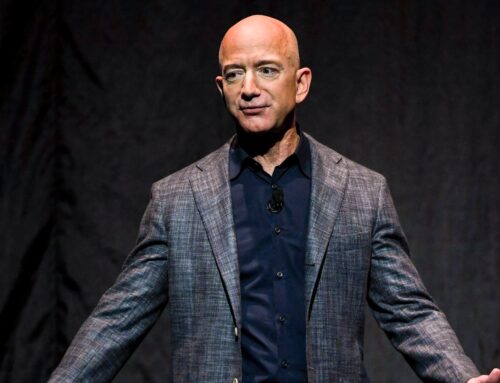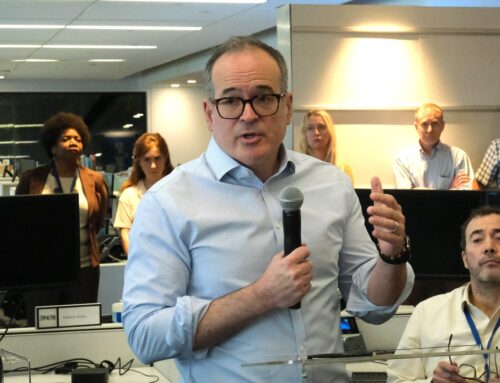TIM, Neoenergia and Renner lead B3’s sustainability index
May 27, 2025
Integrating ESG into core strategy drives top scores in corporate ranking
/i.s3.glbimg.com/v1/AUTH_63b422c2caee4269b8b34177e8876b93/internal_photos/bs/2025/s/C/r9UoBqT9K3bR1VBQBLWQ/foto27emp-101-ise-b2.jpg)
Securing a top spot in the B3 Corporate Sustainability Index (ISE)—the Brazilian stock exchange’s benchmark for environmental, social, and corporate governance (ESG) performance—has become a coveted achievement for companies focused on ESG practices, as investor and regulatory demands for transparency and accountability continue to rise.
In the latest ISE list released by B3, telecommunications company TIM emerged as the highest-ranking firm, scoring 90.03 out of 100 points. Following closely were utility Neoenergia with 88.84 points and fashion retailer Lojas Renner with 88.38. Rounding out the top 10 were Engie (88.04), Ambipar (87.56), Natura (87.26), CPFL (85.44), Bradesco (85.21), Atacadão (84.90), and Cemig (84.58). To determine each stock’s weight in the index, these scores are combined with market capitalization data for publicly traded shares.
So what does it take to reach the top? According to executives from the top three companies, consistency over the medium and long term, integration of sustainable practices into business strategy, and the active engagement of leadership, employees, and suppliers are critical to achieving high ESG performance.
“Sustainability has long been embedded across several aspects of our company’s strategy, and we’ve worked on multiple ESG dimensions,” TIM Brasil CEO Alberto Griselli said in an interview with Valor. Since 2021, the company has climbed from 13th to 11th, then 4th, and now ranks 1st.
Mr. Griselli attributes the company’s leadership in the 2025 ISE to progress across a broad ESG agenda, including emission reduction policies, increased representation of women and Black employees in leadership roles, tighter supplier standards on human rights and labor conditions, and improved waste management practices.
In the area of diversity, for instance, the company has already surpassed its 2025 goal of having 36% of leadership positions held by women, reaching 37.4%. The “TIM Pérolas Negras” program, aimed at boosting Black representation, has helped bring Black employees to 42.2% of the workforce and 22.1% of leadership. The goal is to reach 25% by the end of this year. “With greater respect for diversity, employee engagement has grown, which translates into improved performance in daily operations,” Mr. Griselli noted.
The topic of Diversity, Equity, and Inclusion (DEI) was recently expanded in B3’s reporting framework. Within the “Human Capital” dimension, new questions address issues such as employees with disabilities, parental leave, career development, and promotion opportunities. According to B3’s Communications and Sustainability Director, Janaina Vilella, evolving ESG trends are shaping investor expectations and prompting broader societal demands for corporate responsibility. This, she said, makes it necessary to “refine language, criteria, and protocols to better reflect company realities.”
The “Corporate Governance and Senior Management” category now also references IFRS S1, a new sustainability reporting standard set to become mandatory for Brazilian publicly listed companies by 2027 (reporting 2026 data). “At TIM, we don’t work for the indices—they work for us,” said Mario Girasole, vice president of regulatory and institutional Affairs. “We internalize the requirements and use them to raise our game as the bar for public policy continues to rise.”
To ensure lasting impact, sustainable practices must be integrated into the business itself, so that every department can adopt them. according to Anna Carolina Meireles, TIM Brasil’s ESG lead. “Since 2020, our ESG plans have been tied to the company’s strategic roadmap, with an ESG committee reporting directly to the board,” she said.
The business rationale behind the ESG strategy needs to be sound, too. “When ESG doesn’t conflict with business goals—or even aligns with them—it becomes central to strategy and delivers greater impact.” Citing energy as an example, he noted that TIM leads the telecom sector in distributed generation (DG), with 60% of its electricity sourced from renewables, mostly solar, through 132 plants. The goal is to reach 85% through self-generation and open-market purchases. “Sustainability aside, this also cuts costs and shields us from tariff flags,” he said about the mechanism to increase prices during periods of drought.
TIM’s ISE performance is also tied to its CDP (Carbon Disclosure Project) score. For the second consecutive year, the company earned an “A” rating for climate leadership—a distinction held by only 2% of the 22,400 companies evaluated globally. Neoenergia and Lojas Renner, the other two firms atop the ISE, also received “A” ratings. IFRS S2, which will also become mandatory in Brazil, is already factored into CDP’s assessments used by B3.
Both Neoenergia and Renner also credit their ISE success to a long-term view and continuous evolution. “This achievement reflects a robust and integrated corporate sustainability strategy, reinforcing our commitment to sustainable value creation, transparency, and institutional accountability,” said Neoenergia CEO Eduardo Capelastegui.
Both Neoenergia and Renner attribute their ISE success to a continuous “journey” of evolution. “This achievement is the result of a robust and integrated corporate sustainability strategy, continuously enhanced, and a reflection of our commitment to sustainable value creation, transparency, and institutional accountability,” said Eduardo Capelastegui, CEO of Neoenergia.
Like TIM, Neoenergia is controlled by a European group—Spain’s Iberdrola—which has accelerated its sustainability agenda and aligned local reporting with international standards. Both companies are preparing for the ESRS (European Sustainability Reporting Standards) under the EU’s CSRD (Corporate Sustainability Reporting Directive) and the CS3D directive on corporate human rights due diligence. This gives them a head start in adapting to Brazil’s upcoming IFRS S1 and S2 reporting requirements.
“The regulatory context adopting new reporting standards has pushed us to improve performance on several material ESG issues,” said Mr. Capelastegui. Last year, for example, Neoenergia conducted a comprehensive gap analysis and improvement plan for human rights across corporate and business areas, with support from an external consultancy.
The company has also worked on indicator updates, standardization of data collection and reporting, and team training to ensure compliance with new criteria. It now manages 30 sustainability goals for 2030, identified with stakeholders and divided into environmental, social, governance, and sustainable finance categories. Leadership engagement and data monitoring are critical.
Executives and board members are encouraged to serve as sponsors of change, reinforcing ESG as a company-wide agenda. Variable compensation for executives is specifically tied to ESG indicators.
Neoenergia tracks implementation via management systems such as Sygris, which monitor KPIs, store supporting documentation, and trigger alerts when ESG performance deviates from targets. In addition to decarbonization, the company closely monitors inclusion of women and Black professionals. Its Electricians School program, which trains women in electrical trades, has been recognized by UN Women, the International Labour Organization (ILO), and the European Union.
“This real-time monitoring enables course corrections, promotes accountability across departments, and ensures that commitments are met—ultimately contributing to strong performance in indexes like the ISE B3,” said Mr. Capelastegui.
At Renner, supplier engagement is a key focus in the sustainability strategy. Suppliers are essential to reducing Scope 3 emissions and meeting the company’s goal of having 100% of its private-label garments include at least one sustainable attribute—currently at 80%.
“Through the ‘Rede Responsável’ [Responsible Network] program, we qualify our partners and bring them closer to sustainability concepts,” said Regina Durante, director of people and sustainability at the apparel retailer. Transitioning to cleaner materials and processes is the biggest challenge in the industry, she noted.
Renner provides an environmental management system for suppliers to report on water, energy, chemicals, waste, and emissions. Denim, one of the most water-intensive garments—estimated at 5,200 liters from cotton cultivation to post-consumer use—is closely monitored. As of the latest measurement, more than 50% of denim sold in stores had a low water footprint, a claim verified by third-party auditors.
“When it comes to Scope 3, the challenge is massive—it requires rethinking the industry and product design,” said Durante. In one project, Renner partnered with large manufacturers and reverse logistics firms to reduce knit and denim waste by 10%. The goal was to co-create textiles with higher recycled content, develop new fibers, and reduce landfill waste. The result: lower disposal costs and new revenue opportunities. “Textile waste is a valuable raw material. With the right technology, it can become new clothing. It’s a strong business case that fosters innovation and strengthens the supply chain,” she said.
In terms of ecodesign, Renner also engages startups via open innovation challenges and shares training through its internal platform, Universidade Renner. The company collaborates with Abrapa (Brazilian Cotton Growers Association) to ensure that 100% of cotton purchased from suppliers comes with the Better Cotton Standard (BCI) seal—an international sustainability certification.
“Our first cycle of commitments (2018–2021) was completed with all goals exceeded—ranging from greenhouse gas emissions reductions to sourcing renewable energy and certifying our apparel supplier base,” said Durante. Since 2022, Renner has launched 12 new goals to reach by 2030, organized under three pillars: climate, circular and regenerative solutions; connections that amplify; and diverse, human-centered relationships.
This article was translated from Valor Econômico using an artificial intelligence tool under the supervision of the Valor International editorial team to ensure accuracy, clarity, and adherence to our editorial standards. Read our Editorial Principles.
Search
RECENT PRESS RELEASES
Related Post



